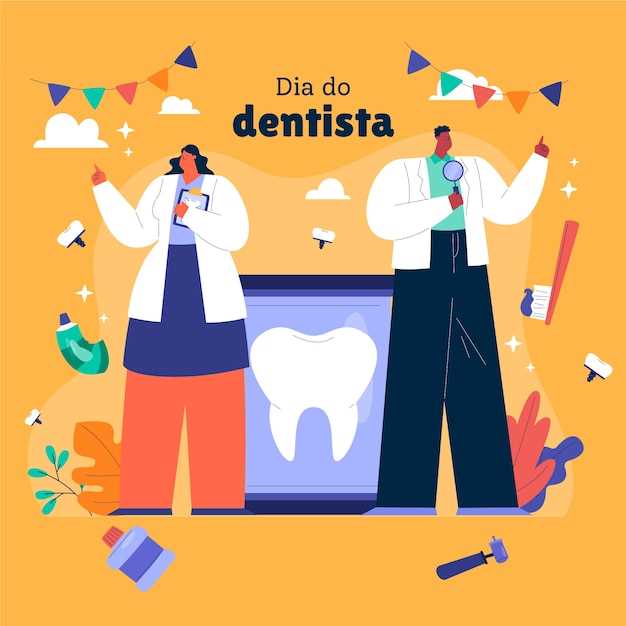
In today’s fast-paced world, maintaining a healthy smile is more crucial than ever. Our oral health plays a significant role in our overall well-being, and adopting preventive measures can help us avoid potential dental problems. By taking proactive steps and implementing effective strategies, we can ensure the longevity and vitality of our teeth and gums.
Emphasizing the significance of preventive dentistry, it is essential to understand that prevention is the key to a healthy mouth. Rather than waiting for dental issues to arise, it is far more advantageous to take preventive action. This proactive approach involves a combination of regular dental check-ups, proper oral hygiene practices, and a balanced diet. By prioritizing preventive dentistry, we can minimize the risk of developing dental problems and maintain optimal oral health.
Implementing a comprehensive oral care routine is a fundamental aspect of preventive dentistry. Brushing our teeth at least twice a day with a fluoride toothpaste and using dental floss to clean between our teeth can help remove plaque and prevent the formation of cavities and gum disease. Additionally, incorporating mouthwash into our routine can further enhance our oral hygiene efforts by reducing bacteria and freshening our breath.
Adopting a balanced diet is another vital component of preventive dentistry. Consuming a variety of nutrient-rich foods, such as fruits, vegetables, and dairy products, can provide our teeth and gums with the essential vitamins and minerals they need to stay strong and healthy. Limiting the intake of sugary and acidic foods and beverages can also help prevent tooth decay and enamel erosion, safeguarding our oral health in the long run.
Importance of Regular Dental Check-ups
Regular dental check-ups play a vital role in maintaining optimal oral health and preventing potential dental issues. These routine visits to the dentist are essential for ensuring the overall well-being of your teeth and gums.
By scheduling regular dental check-ups, you can stay ahead of any potential dental problems and address them before they become more serious. These check-ups allow your dentist to assess the condition of your teeth and gums, detect any early signs of decay, gum disease, or other oral health issues, and provide appropriate treatment or preventive measures.
During a dental check-up, your dentist will thoroughly examine your mouth, including your teeth, gums, tongue, and other oral tissues. They may also take X-rays to get a comprehensive view of your dental health. This comprehensive evaluation helps identify any underlying problems that may not be visible to the naked eye.
In addition to detecting and treating dental issues, regular dental check-ups also provide an opportunity for professional cleaning. Your dentist or dental hygienist will remove plaque and tartar buildup, which cannot be effectively removed through regular brushing and flossing alone. This thorough cleaning helps prevent the development of cavities, gum disease, and other oral health problems.
Furthermore, regular dental check-ups allow your dentist to educate you about proper oral hygiene practices and provide personalized recommendations based on your specific dental needs. They can guide you on the correct techniques for brushing and flossing, recommend suitable dental products, and offer advice on maintaining a healthy diet for optimal oral health.
By prioritizing regular dental check-ups, you can take proactive steps towards maintaining a healthy smile and preventing potential dental problems. Remember, prevention is always better than cure when it comes to your oral health.
Brushing Techniques for Effective Plaque Removal
Proper brushing techniques are essential for maintaining good oral health and preventing dental issues. By using the right brushing techniques, you can effectively remove plaque from your teeth and gums, reducing the risk of cavities, gum disease, and other dental problems.
1. Choose the Right Toothbrush
Start by selecting a toothbrush with soft bristles that can reach all areas of your mouth easily. A toothbrush with a small head is also recommended as it can access hard-to-reach areas, such as the back of your molars.
2. Brush at a 45-Degree Angle
Hold your toothbrush at a 45-degree angle towards your gum line. This angle allows the bristles to reach under the gum line and clean the plaque effectively. Use gentle, circular motions to brush both the outer and inner surfaces of your teeth.
3. Don’t Forget Your Tongue
Plaque can also accumulate on your tongue, leading to bad breath and other oral health issues. To remove plaque from your tongue, gently brush it using your toothbrush or a tongue scraper. This will help keep your breath fresh and improve overall oral hygiene.
4. Brush for Two Minutes
Brushing your teeth for at least two minutes is crucial for effective plaque removal. Set a timer or use a toothbrush with a built-in timer to ensure you brush for the recommended duration. Divide your mouth into quadrants and spend equal time brushing each section.
5. Use Proper Technique for Flossing
In addition to brushing, flossing is essential for removing plaque and food particles from between your teeth. Use a gentle sawing motion to guide the floss between your teeth, and then curve it into a C shape to hug the tooth and clean the sides. Repeat this process for each tooth, including the back ones.
By following these brushing techniques and maintaining a consistent oral hygiene routine, you can effectively remove plaque, reduce the risk of dental problems, and maintain a healthy smile.
The Role of Flossing in Preventing Gum Disease
Flossing plays a crucial role in maintaining optimal gum health and preventing the onset of gum disease. By incorporating this simple yet effective oral hygiene practice into your daily routine, you can significantly reduce the risk of developing gum problems and ensure the long-term health of your teeth and gums.
Regular flossing helps remove plaque and food particles that get trapped between the teeth and along the gumline. These hard-to-reach areas are often missed by brushing alone, making flossing an essential step in preventing the buildup of harmful bacteria and the subsequent inflammation of the gums.
When plaque is not effectively removed, it can harden into tartar, which cannot be eliminated by brushing or flossing alone. Tartar buildup can lead to gum disease, characterized by symptoms such as redness, swelling, bleeding, and even gum recession. Flossing helps disrupt the formation of tartar, keeping your gums healthy and reducing the risk of gum disease.
In addition to preventing gum disease, flossing also contributes to overall oral health by promoting fresh breath. By removing food particles and bacteria from between the teeth, flossing helps combat bad breath, leaving your mouth feeling clean and refreshed.
It is important to note that proper flossing technique is crucial for maximizing its benefits. To effectively clean between your teeth, gently slide the floss up and down, following the curve of each tooth. Be sure to reach below the gumline, but avoid snapping the floss, as it may cause injury to the gums.
In conclusion, flossing is an integral part of preventive dental care and plays a vital role in preventing gum disease. By incorporating this simple habit into your daily oral hygiene routine, you can maintain healthy gums, prevent dental problems, and enjoy a confident smile for years to come.
The Benefits of Fluoride in Dental Health
Fluoride plays a crucial role in maintaining and improving oral health. It offers a multitude of benefits that contribute to the prevention of dental problems and the overall well-being of teeth and gums.
1. Strengthening Tooth Enamel
One of the primary benefits of fluoride is its ability to strengthen tooth enamel. Enamel is the outer layer of the tooth that protects it from decay and damage. Regular exposure to fluoride helps to remineralize and fortify the enamel, making it more resistant to acid attacks from bacteria and sugary foods.
2. Preventing Tooth Decay
Fluoride acts as a powerful weapon against tooth decay. It inhibits the growth of harmful bacteria in the mouth and reduces the production of acid that can erode tooth enamel. By incorporating fluoride into your oral care routine, you can significantly lower the risk of cavities and dental decay.
Moreover, fluoride can reverse early signs of tooth decay by promoting the remineralization process. This means that it can repair and restore weakened areas of the enamel before they progress into cavities.
Overall, the benefits of fluoride in dental health are undeniable. It strengthens tooth enamel, prevents tooth decay, and promotes the overall well-being of your teeth and gums. By ensuring an adequate intake of fluoride through fluoridated water, toothpaste, and professional treatments, you can maintain a healthy and beautiful smile for years to come.
Healthy Diet Choices for Strong Teeth and Gums
Eating a nutritious diet is essential for maintaining optimal oral health and promoting the strength and health of your teeth and gums. By making wise food choices and incorporating a variety of nutrient-rich foods into your diet, you can support the overall well-being of your oral cavity.
1. Include calcium-rich foods: Calcium is crucial for strong teeth and bones. Incorporate dairy products like milk, cheese, and yogurt into your diet. If you are lactose intolerant or follow a vegan diet, opt for calcium-fortified plant-based milk alternatives, tofu, almonds, and leafy green vegetables.
2. Consume vitamin C-rich foods: Vitamin C is essential for healthy gums and can help prevent gum disease. Include citrus fruits like oranges, grapefruits, and lemons in your diet. Other good sources of vitamin C include strawberries, kiwi, bell peppers, and broccoli.
3. Choose foods high in vitamin D: Vitamin D is necessary for the absorption of calcium, which is vital for strong teeth. Include fatty fish like salmon and mackerel, fortified cereals, and egg yolks in your diet to ensure an adequate intake of vitamin D.
4. Incorporate crunchy fruits and vegetables: Crunchy fruits and vegetables, such as apples, carrots, and celery, can help clean your teeth and stimulate saliva production, which aids in neutralizing acids and preventing tooth decay.
5. Limit sugary and acidic foods: Sugary and acidic foods can contribute to tooth decay and erosion. Limit your consumption of sugary snacks, sodas, and juices. If you do indulge in these treats, make sure to brush your teeth afterward or rinse your mouth with water to minimize the impact on your oral health.
6. Stay hydrated: Drinking plenty of water throughout the day helps wash away food particles and keeps your mouth hydrated. It also helps maintain the production of saliva, which plays a crucial role in protecting your teeth and gums.
7. Avoid excessive alcohol and tobacco use: Alcohol and tobacco products can have detrimental effects on your oral health, including staining your teeth, causing bad breath, and increasing the risk of gum disease and oral cancer. It is best to avoid or limit their consumption.
By following these healthy diet choices and maintaining good oral hygiene practices, you can promote strong teeth and gums, reduce the risk of dental problems, and enjoy a lifetime of optimal oral health.
Avoiding Bad Habits that Harm Oral Health

Developing good oral health habits is essential for maintaining a healthy smile. However, it is equally important to be aware of and avoid bad habits that can harm your oral health. By steering clear of these detrimental practices, you can protect your teeth and gums from potential damage and maintain optimal oral health.
| Bad Habit | Consequences |
|---|---|
| Neglecting Regular Brushing and Flossing | Increased risk of cavities, gum disease, and bad breath |
| Using Tobacco Products | Higher likelihood of oral cancer, gum disease, tooth discoloration, and bad breath |
| Excessive Consumption of Sugary Foods and Drinks | Greater susceptibility to tooth decay and cavities |
| Chewing on Ice, Pens, or Hard Objects | Potential for chipped or cracked teeth, as well as damage to existing dental work |
| Grinding or Clenching Teeth (Bruxism) | Tooth wear, jaw pain, headaches, and potential damage to teeth and dental restorations |
| Using Teeth as Tools | Risk of tooth fractures or damage to the enamel |
| Ignoring Dental Check-ups | Missed opportunity to detect and address oral health issues in their early stages |
By avoiding these bad habits and adopting a proactive approach to oral health, you can significantly reduce the risk of dental problems and maintain a healthy smile for years to come.





